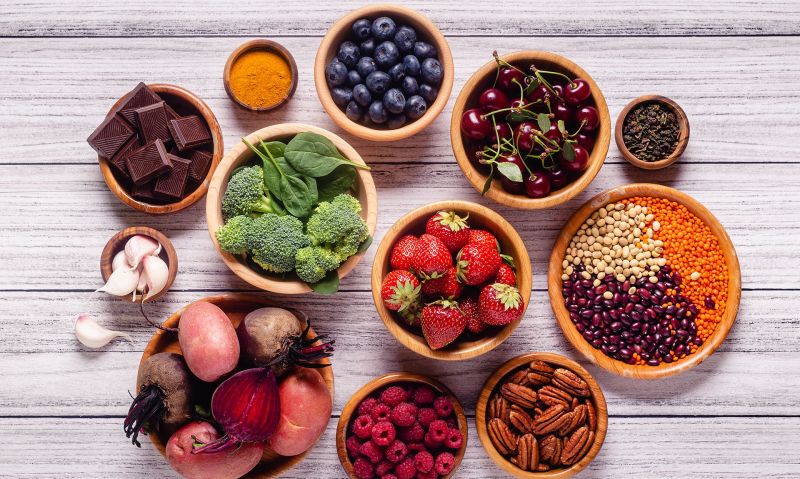
Learn what antioxidants are and how we get enough of them in our diets.
We’re told that antioxidants are good for us, but why? What are they, and how do we get enough of them in our diets?
Antioxidants are naturally occurring chemicals in foods that fight free radicals, which are unstable molecules that can accumulate in our cells and damage DNA, proteins and lipids. The result is an increased risk of cancer and other diseases.
Free radicals can lead to:
• Deterioration of the eye lens, contributing to vision loss
• Joint inflammation and arthritis
• Damage to brain nerve cells, increasing the risk of Alzheimer’s and Parkinson’s diseases
• Certain cancers, caused by damaging DNA within cells
• Increased risk of heart disease
• Accelerated aging
Antioxidants may prevent or delay these and other kinds of cell damage.
Color matters. Diets rich in colorful fruits and vegetables are great sources of healthy antioxidants. Evidence suggests the naturally occurring antioxidants in food are more beneficial than the use of supplements.
Flavonoids, the natural pigments that give plants their color, are high in antioxidants. Choose organic produce when possible; some food manufacturers use dyes to make fruits and vegetables more vibrant and appealing.
Lycopene and anthocyanins give red fruits and vegetables their color. They’re found in tomatoes, red peppers, strawberries, raspberries and red beans. Loaded with vitamin C, vitamin A and potassium, they improve heart function, keep bones strong and provide neurological benefits.
Carotenoids are found in yellow and orange fruits and vegetables, including carrots, peaches, squash and pineapple. Packed with vitamin C, vitamin A and potassium, they help boost immune function and enhance vision.
Chlorophyll, lutein and zeaxanthin make up green pigments, which provide lots of potassium and vitamin K, aid in blood clotting and protect the heart.
Green fruits and vegetables also help maintain strong bones, teeth and healthy vision. Dark leafy greens have the highest amounts of antioxidants and fiber.
Phenolic flavonoids are found in blue- and purple-colored foods like blueberries, blackberries, purple grapes, purple onions, purple cabbage and eggplant. They improve urinary tract health, memory function and help promote healthy aging, and are especially dense in antioxidants.
Other sources of antioxidants include:
• Allium sulphur compounds (leeks, onions, garlic)
• Catechins (red wine, tea)
• Copper (seafood, lean meat, milk, nuts)
• Cryptoxanthins (red capsicum, pumpkin, mangoes)
• Flavonoids (tea, green tea, citrus fruits, red wine, onions, apples)
• Indoles (cruciferous vegetables such as broccoli, cabbage and cauliflower)
• Isoflavonoids (soybeans, tofu, lentils, peas, milk)
• Lignans (sesame seeds, bran, whole grains, vegetables)
• Manganese (seafood, lean meat, milk, nuts)
• Polyphenols (herbs)
• Selenium (seafood, Brazil nuts, lean meat, whole grains)
• Vitamin A (liver, sweet potatoes, carrots, milk, egg yolks)
• Vitamin C (bell peppers, oranges, blackcurrants, kiwi, mangoes, broccoli, spinach, strawberries)
Army veteran Jennifer Campbell is a certified personal trainer with a master’s degree in nutrition education. She is past commander of the California American Legion’s 24th District and Hollywood Post 43.
- Magazine

